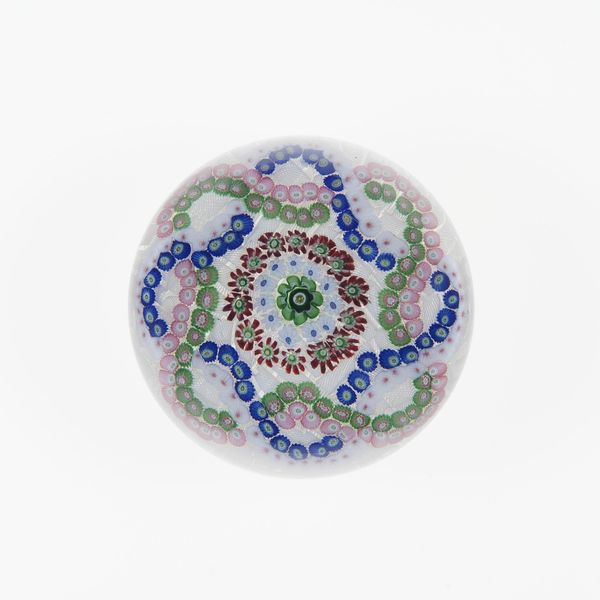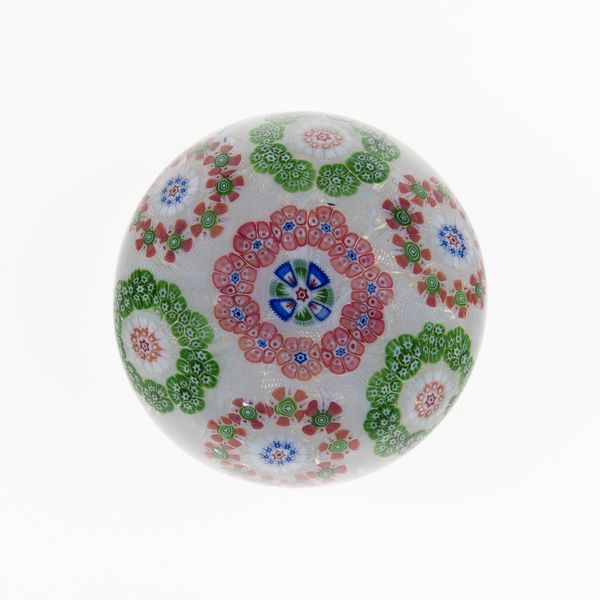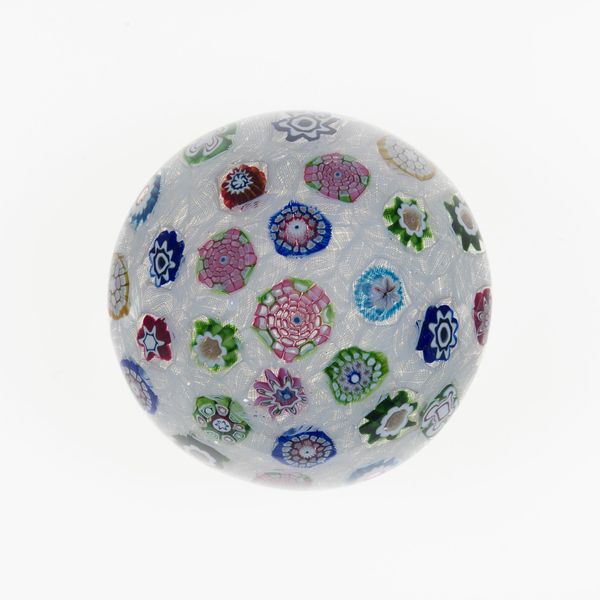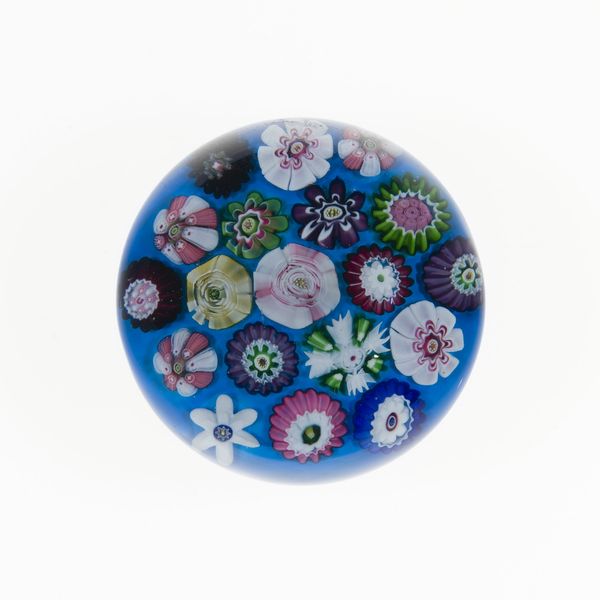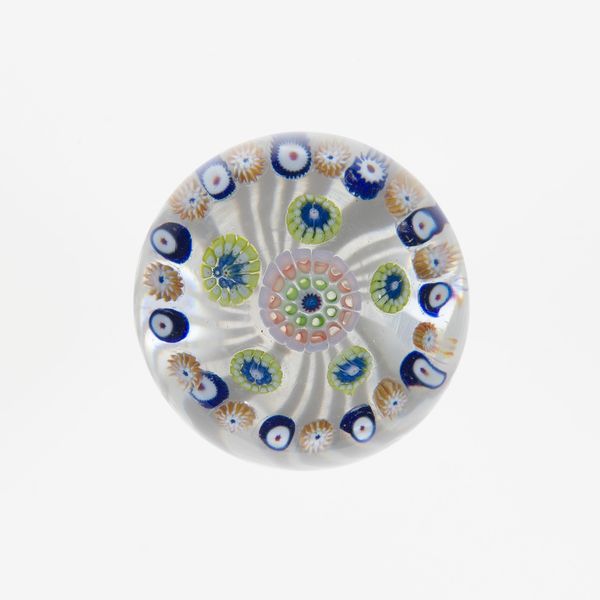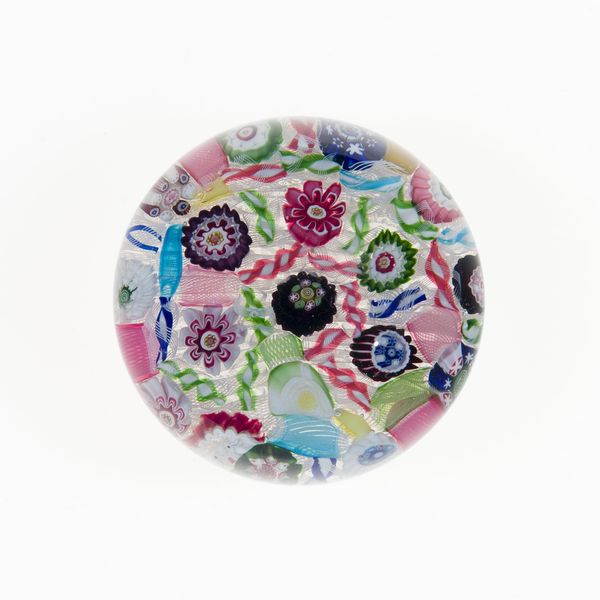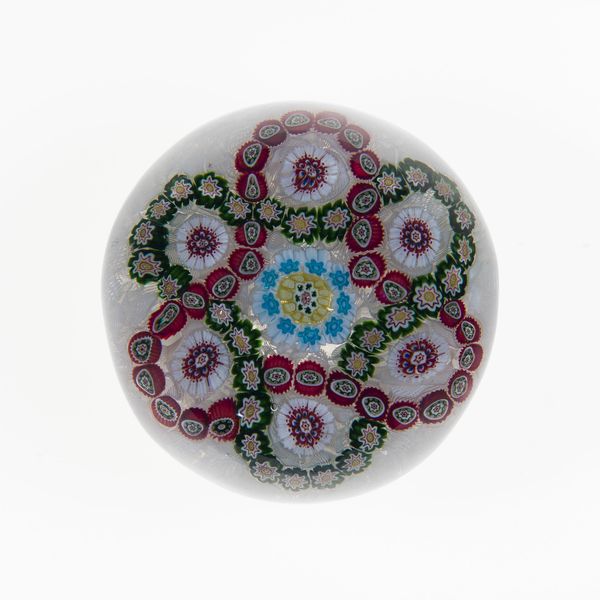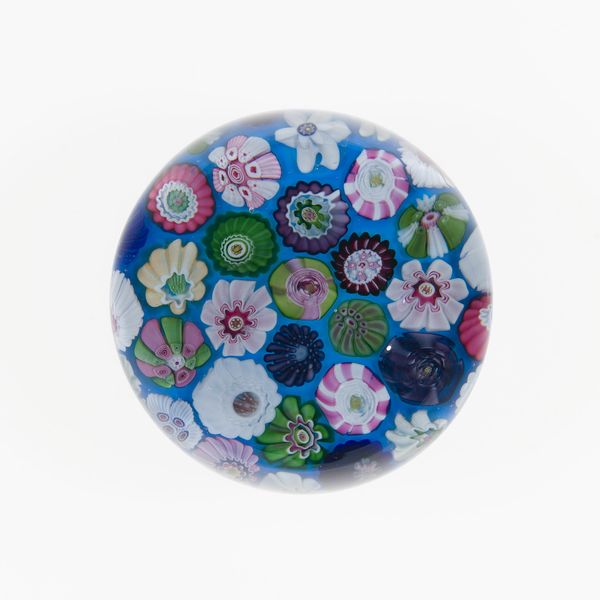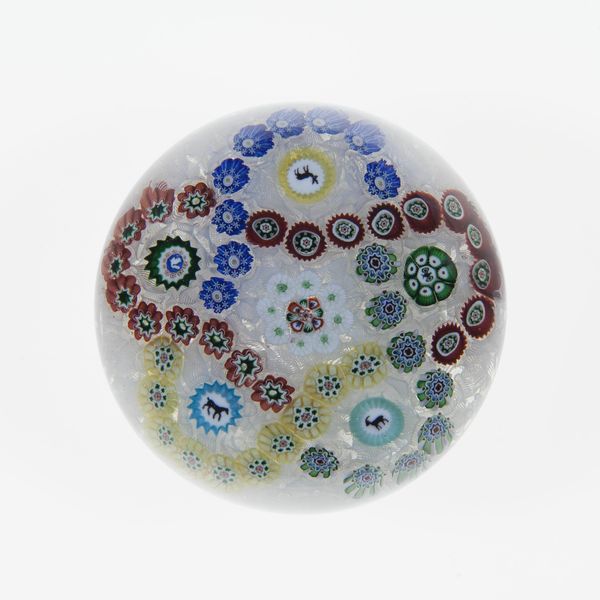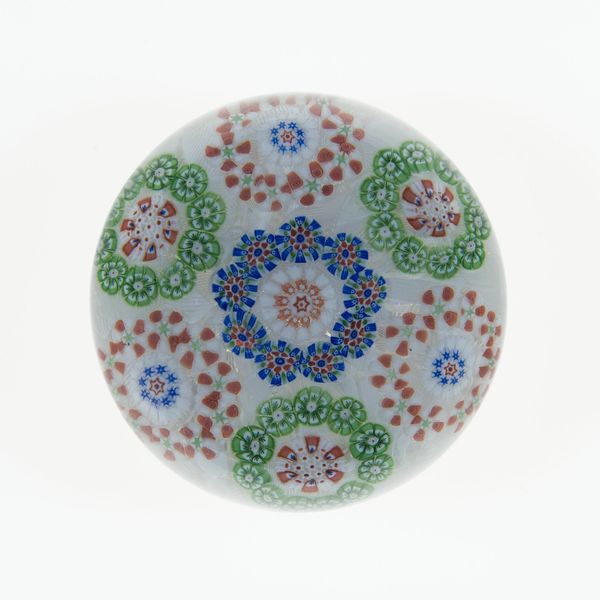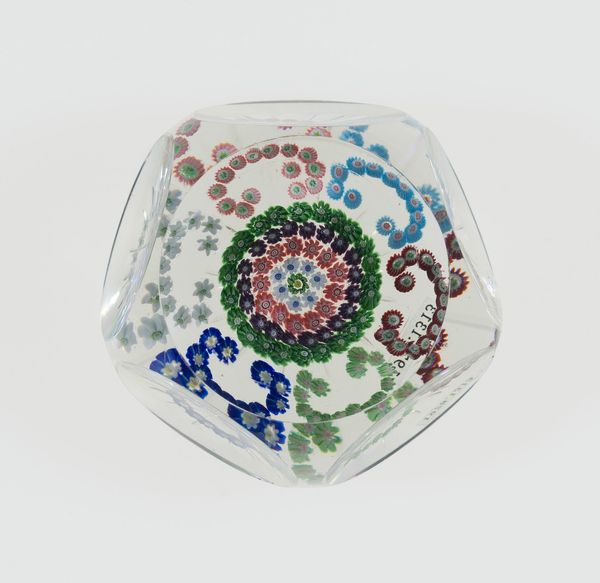
Dimensions: Diam. 8.6 cm (3 3/8 in.)
Copyright: Public Domain
Curator: Here we have an exquisite glass paperweight, attributed to the Clichy Glasshouse, crafted sometime between 1845 and 1860. It’s a superb example of decorative art from 19th century France. Editor: My first impression is one of almost claustrophobic delicacy. All those tiny flowers suspended in the glass give it a precious, but somewhat restrained feeling. Curator: Precisely! The millefiori technique, the assembly of glass rods into these miniature floral designs, creates a fascinating internal architecture. Notice how the composition employs concentric circles, drawing the eye inward. The colour palette – soft pinks, greens, and that striking blue at the very heart of the piece – creates a balanced, harmonious whole. Editor: While undeniably beautiful, I can't help but consider its original function. A paperweight served to keep documents in place, usually for members of the bourgeoisie. There's a tension here – this delicate object embodies the luxury of a specific social class, reminding us of societal disparities. These would be placed upon tables with other beautiful and curious objects representative of social position. Curator: An astute point! The paperweight, seemingly innocuous, does participate in a wider network of display and status. However, purely from an aesthetic viewpoint, consider the craftsmanship involved. The precision with which each tiny floral element is rendered speaks to an impressive level of technical skill and artistic intent. Furthermore, observe the spherical form. The curved glass distorts the internal arrangement in subtle ways, playing with perspective and adding depth. Editor: Yes, the distortion creates a dreamlike effect, a miniature world captured and preserved. The choice to encapsulate these forms, these tiny representations of nature, reveals perhaps a human desire to control and contain beauty itself. In that regard, isn't the "romanticism" tag applicable not because of what’s portrayed, but the intention of holding it forever still and fixed. Curator: Indeed, such encapsulation serves as a poignant visual metaphor. Now, considering its current placement in the Art Institute of Chicago, what meanings does it accrue now that it is isolated in the hallowed halls? Editor: It is no longer purely functional, it’s divorced from any desk and instead embodies the values ascribed to art and the enduring class structures still embedded in our societies. Curator: An elegant encapsulation of its complex story! Editor: I appreciate the prompt to ponder what appears contained to that form.
Comments
No comments
Be the first to comment and join the conversation on the ultimate creative platform.
